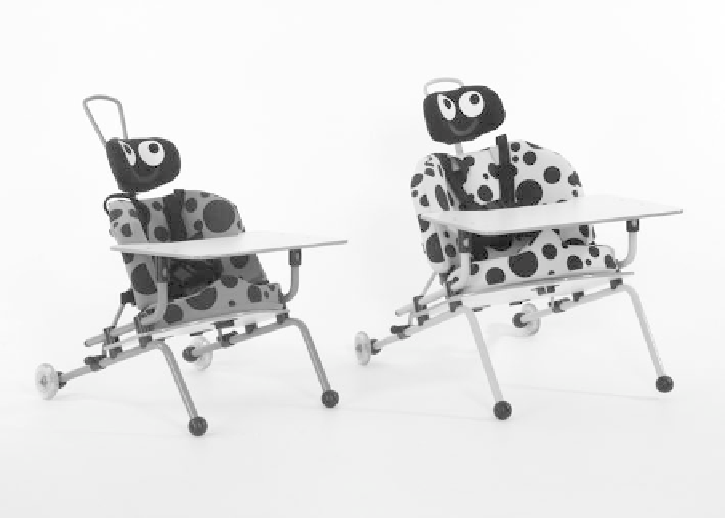Biomedical Engineering Reference
In-Depth Information
FIgUre 12.1
(See color insert.)
Special chair to help the child sit and use upper limbs.
Michael currently exhibits regular trunk balance and can remain seated by using his
hands. He gets around by dragging himself in a seated position. He can kneel without
support, but only for a short time. Michael uses his left hand to grasp objects, albeit with
significant lack of coordination. He is not capable of manual writing and is dependent
in activities of daily living (eating, dressing, hygiene). He continues to use a customized
wheelchair for positioning and locomotion.
Michael's cognitive development has always been compatible with his age, but the
use of AT became necessary because of his learning disabilities and difficulties making
new acquisitions. One of the main targets of AT use was the expansion of expressive
communication and fostering of social interaction.
The concern was initially to create a consistent pattern of affirmative and negative
responses by means of conventionalizing Michael's specific gestures, as well as to provide
him with dialogical actions with his interlocutors so he could more actively participate
in conversations. To this end, the interlocutors had to say question-like phrases, which
also requires training. The themes chosen on this occasion were situations based on his
routine, but in a make-believe manner, using AT aimed at fostering greater control of his
environment, such as custom-made switches on electronic toys that allowed Michael to
control them as if he were using a remote control. Figure 12.2 is an example of a custom-
made switch on electronic toys that require a single movement of a hand, foot, or the head.
Another goal of the neurorehabilitation team was to help Michael attain more functional
means of getting around because he was able only to drag himself about in a seated
position with substantial balance deficits; he was usually transported in a conventional
baby carriage. To this end, an alternative device for locomotion was introduced, such as the
adapted flyer in Figure 12.3. This tool allowed Michael to get around more independently
in controlled environments (e.g., home, school, and stores).

